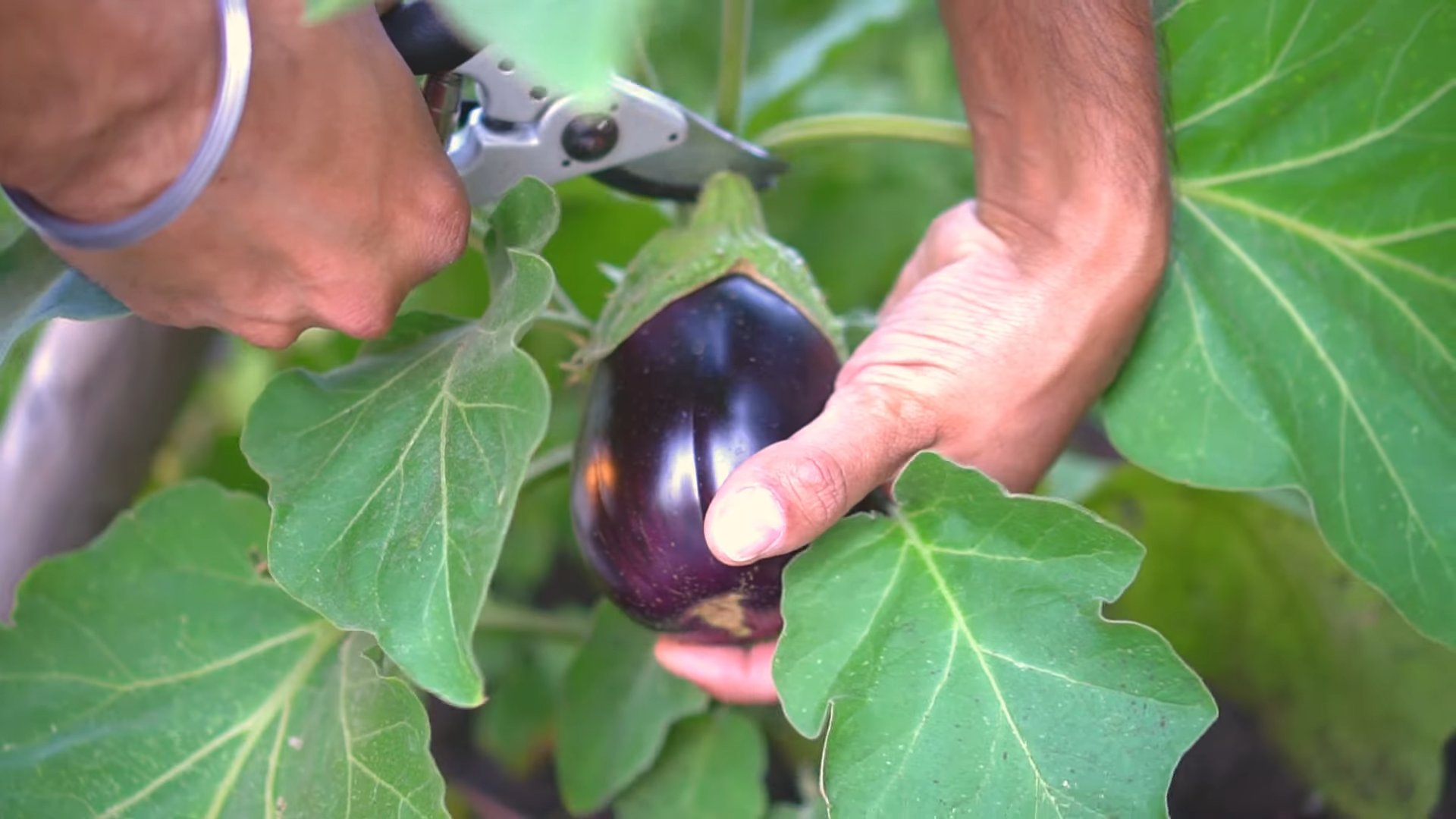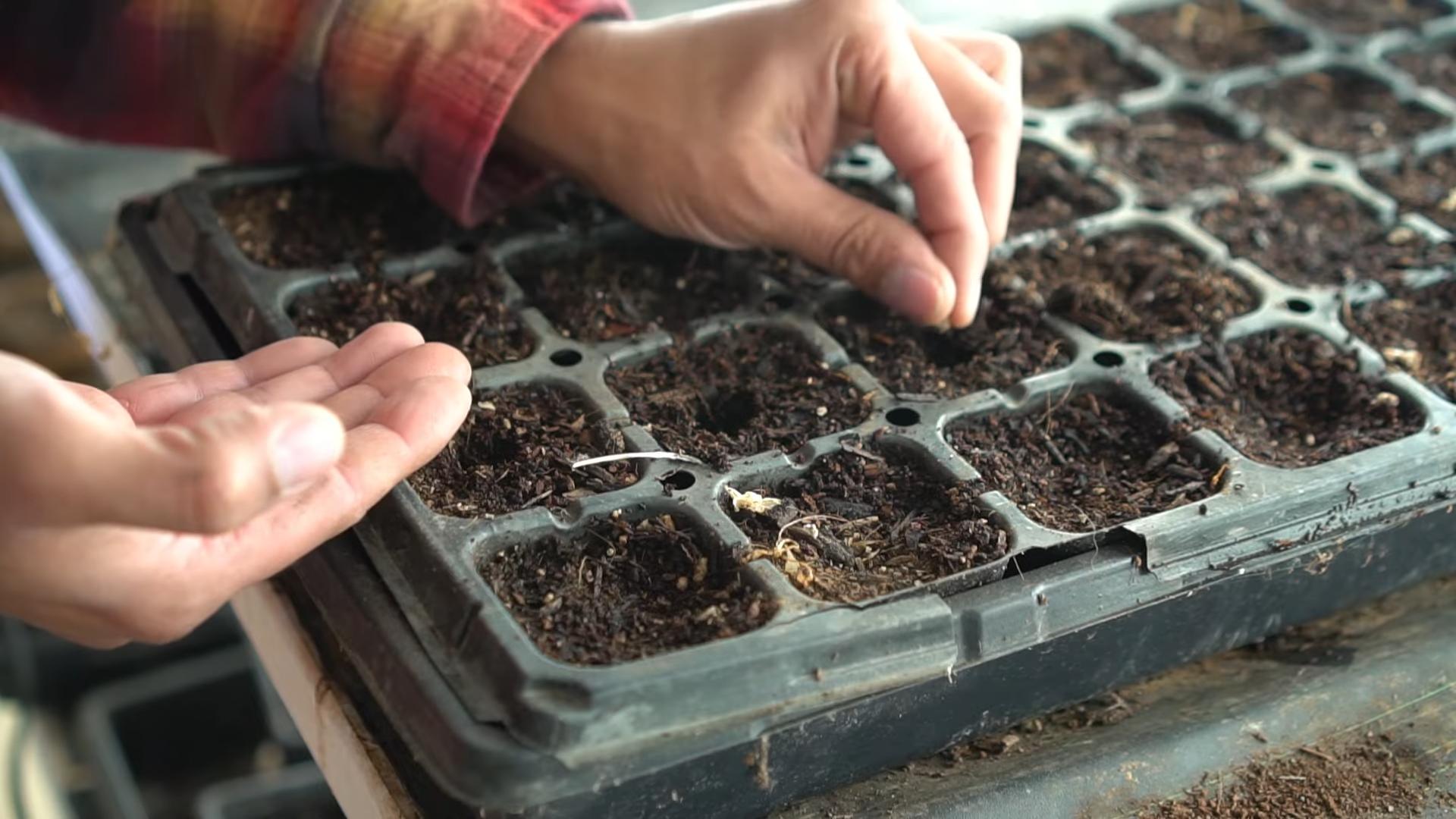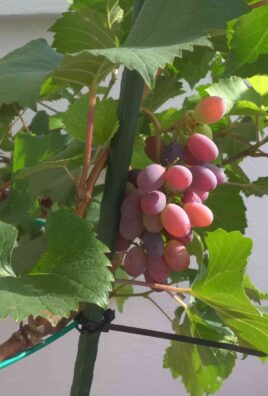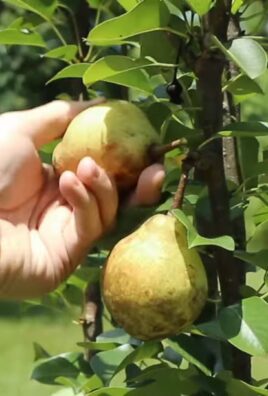Grow Eggplants Successfully, even if you think you have a “brown thumb”! Have you ever dreamed of plucking a perfectly ripe, glossy eggplant straight from your own garden, ready to be transformed into a delicious baba ghanoush or a hearty eggplant parmesan? I know I have! But the thought of actually *growing* them can feel a little daunting, right?
Eggplants, with their rich history tracing back to ancient Asia, have been cultivated for centuries, gracing tables and gardens across the globe. They’re more than just a vegetable; they’re a symbol of abundance and culinary creativity. However, many home gardeners struggle to grow eggplants successfully, often facing challenges like pests, diseases, and inconsistent fruit production.
That’s where this DIY guide comes in! I’m going to share some of my favorite, tried-and-true tricks and hacks that will help you bypass those common pitfalls and enjoy a bountiful eggplant harvest. Whether you’re a seasoned gardener or just starting out, these tips will empower you to cultivate healthy, thriving eggplant plants and savor the satisfaction of growing your own food. Let’s get started and turn your eggplant dreams into a delicious reality!

Growing Eggplants: A DIY Guide to Bountiful Harvests
Okay, eggplant lovers, let’s get down to business! Growing your own eggplants can seem a little intimidating, but trust me, it’s totally doable, and the taste of a homegrown eggplant is *so* worth the effort. I’m going to walk you through everything you need to know, from starting seeds to harvesting those beautiful, glossy fruits.
Choosing Your Eggplant Variety
First things first, you need to decide what kind of eggplant you want to grow! There are tons of varieties out there, each with its own unique characteristics.
* Globe Eggplants: These are your classic, large, dark purple eggplants that you typically see in the grocery store. ‘Black Beauty’ is a popular and reliable choice.
* Italian Eggplants: Slightly smaller and more elongated than globe eggplants, Italian varieties like ‘Listada de Gandia’ (with its beautiful purple and white stripes) are known for their mild flavor.
* Asian Eggplants: These tend to be long and slender, with thinner skin and a sweeter taste. ‘Ichiban’ and ‘Long Purple’ are great options.
* White Eggplants: For something a little different, try growing white eggplants like ‘Casper’ or ‘White Beauty’. They have a delicate flavor and a creamy texture.
* Ornamental Eggplants: If you’re looking for something truly unique, consider growing ornamental eggplants like ‘Turkish Orange’ or ‘Thai Green’. These are grown more for their appearance than their flavor, but they can add a lot of visual interest to your garden.
Consider your climate, space, and taste preferences when choosing your eggplant variety. Some varieties are more heat-tolerant than others, and some are better suited for container gardening.
Starting Eggplant Seeds Indoors
Eggplants need a long growing season, so it’s best to start your seeds indoors about 8-10 weeks before the last expected frost.
1. Gather Your Supplies: You’ll need:
* Eggplant seeds
* Seed starting trays or small pots
* Seed starting mix (a sterile, lightweight potting mix)
* A heat mat (optional, but helpful)
* A grow light (optional, but recommended)
* A spray bottle filled with water
2. Sow the Seeds: Fill your seed starting trays or pots with seed starting mix. Moisten the mix thoroughly, but don’t let it get soggy. Sow the seeds about 1/4 inch deep, and gently cover them with soil.
3. Provide Warmth and Light: Eggplant seeds need warmth to germinate. Place your seed starting trays on a heat mat, if you have one. Otherwise, find a warm spot in your house, like on top of the refrigerator. If you’re using a grow light, position it a few inches above the trays.
4. Keep the Soil Moist: Use a spray bottle to mist the soil regularly, keeping it consistently moist but not waterlogged.
5. Wait for Germination: Eggplant seeds typically germinate in 7-14 days. Once the seedlings emerge, remove them from the heat mat and move them under the grow light (if you’re using one).
6. Thin the Seedlings: If you sowed multiple seeds in each pot, thin them out to one seedling per pot once they have their first true leaves (the leaves that appear after the initial seed leaves).
7. Harden Off the Seedlings: Before transplanting your eggplant seedlings outdoors, you need to “harden them off.” This means gradually exposing them to outdoor conditions over a period of 1-2 weeks. Start by placing them outside in a sheltered spot for a few hours each day, gradually increasing the amount of time they spend outdoors. Protect them from strong winds and direct sunlight at first.
Transplanting Eggplant Seedlings Outdoors
Once the danger of frost has passed and the soil has warmed up, it’s time to transplant your eggplant seedlings into the garden.
1. Choose a Sunny Location: Eggplants need at least 6-8 hours of sunlight per day. Choose a location in your garden that gets plenty of sun.
2. Prepare the Soil: Eggplants prefer well-drained soil that is rich in organic matter. Amend the soil with compost or well-rotted manure before planting.
3. Space the Plants Properly: Space your eggplant plants 18-24 inches apart, depending on the variety. Larger varieties will need more space.
4. Dig the Holes: Dig holes that are slightly larger than the root balls of your eggplant seedlings.
5. Transplant the Seedlings: Gently remove the seedlings from their pots and place them in the holes. Backfill the holes with soil, and gently firm the soil around the base of the plants.
6. Water Thoroughly: Water the newly transplanted seedlings thoroughly.
7. Mulch Around the Plants: Apply a layer of mulch around the base of the plants to help retain moisture, suppress weeds, and regulate soil temperature. Straw, wood chips, or shredded leaves are all good options.
Caring for Your Eggplant Plants
Once your eggplant plants are in the ground, they’ll need regular care to thrive.
1. Water Regularly: Eggplants need consistent moisture, especially during hot, dry weather. Water deeply whenever the top inch of soil feels dry. Avoid overhead watering, as this can promote fungal diseases.
2. Fertilize Regularly: Eggplants are heavy feeders, so they need regular fertilization. Use a balanced fertilizer (like 10-10-10) every 2-3 weeks, or a fertilizer specifically formulated for vegetables. You can also side-dress the plants with compost or well-rotted manure.
3. Provide Support: As your eggplant plants grow, they may need support to prevent the branches from breaking under the weight of the fruit. Stake the plants or use tomato cages to provide support.
4. Pinch Off Suckers: Suckers are small shoots that grow from the base of the plant. Pinch them off to encourage the plant to focus its energy on producing fruit.
5. Watch Out for Pests and Diseases: Eggplants are susceptible to a variety of pests and diseases, including aphids, flea beetles, spider mites, and fungal diseases. Inspect your plants regularly for signs of problems, and take action promptly if you spot anything suspicious. Insecticidal soap, neem oil, and copper fungicide are all effective treatments for common eggplant pests and diseases.
Harvesting Your Eggplants
The moment you’ve been waiting for! Harvesting your eggplants at the right time is crucial for getting the best flavor and texture.
1. Check for Ripeness: Eggplants are typically ready to harvest when they are firm, glossy, and have reached their mature size and color. The skin should be smooth and unblemished. Gently press the skin with your thumb; if it leaves a slight indentation, the eggplant is ripe.
2. Harvest Carefully: Use a sharp knife or pruning shears to cut the eggplant from the plant, leaving about an inch of stem attached. Be careful not to damage the plant or the other eggplants.
3. Harvest Regularly: Harvest your eggplants regularly to encourage the plant to produce more fruit. Overripe eggplants can become bitter and seedy.
Troubleshooting Common Eggplant Problems
Even with the best care, you might encounter some problems while growing eggplants. Here are a few common issues and how to address them:
* Blossom End Rot: This is a common problem that causes the bottom of the eggplant to rot. It’s usually caused by calcium deficiency or inconsistent watering. To prevent blossom end rot, make sure your soil is rich in calcium, water regularly, and mulch around the plants to retain moisture. You can also add calcium to the soil by mixing in bone meal or crushed eggshells.
* Flea Beetles: These tiny beetles can chew holes in the leaves of your eggplant plants. To control flea beetles, use row covers to protect the plants, or spray them with insecticidal soap or neem oil.
* Aphids: These small, sap-sucking insects can weaken your eggplant plants. To control aphids, spray them with a strong stream of water, or use insecticidal soap or neem oil.
* Fungal Diseases: Eggplants are susceptible to a variety of fungal diseases, such as early blight and verticillium wilt. To prevent fungal diseases, avoid overhead watering, provide good air circulation, and use a copper fungicide.
Enjoying Your Homegrown Eggplants
Now that you’ve harvested your beautiful eggplants, it’s time to enjoy them! There are endless ways to cook and eat eggplants. Here are a few ideas:
* Grilled Eggplant: Slice the eggplant into rounds, brush with olive oil, and grill until tender.
* Roasted Eggplant: Cut the eggplant into cubes, toss with olive oil and herbs, and roast in the oven until tender.
* Eggplant Parmesan: Bread and fry eggplant slices

Conclusion
So, there you have it! Growing eggplants successfully doesn’t have to be a daunting task reserved for seasoned gardeners. By implementing these simple yet effective DIY tricks, you can transform your garden into a thriving eggplant haven, bursting with beautiful, glossy fruits. We’ve covered everything from optimizing soil conditions and providing adequate support to warding off common pests and diseases. Remember, the key to a bountiful harvest lies in consistent care and attention to detail.
This isn’t just about saving money; it’s about connecting with your food source, understanding the nuances of plant life, and experiencing the immense satisfaction of nurturing something from seed to table. Imagine the pride you’ll feel serving up a delicious eggplant parmesan, knowing that the star ingredient came straight from your own backyard.
But the journey doesn’t end here! Feel free to experiment with different eggplant varieties. Try growing the classic Black Beauty, the slender Japanese eggplant, or even the vibrant Thai eggplant. Each variety offers a unique flavor profile and texture, adding exciting dimensions to your culinary creations.
Consider companion planting to further enhance your eggplant’s growth. Basil, marigolds, and thyme are excellent choices, as they help deter pests and attract beneficial insects. You can also explore different mulching techniques to conserve moisture and suppress weeds. Straw, wood chips, or even compost can work wonders.
Don’t be afraid to tweak these DIY tricks to suit your specific climate and growing conditions. What works in one region might need adjustments in another. The beauty of gardening is that it’s a constant learning process. Observe your plants closely, pay attention to their needs, and adapt your approach accordingly.
We are confident that with a little effort and these proven techniques, you’ll be well on your way to enjoying a plentiful eggplant harvest. This year, make it your goal to **grow eggplants successfully** and experience the joy of homegrown produce.
Now, we want to hear from you! Have you tried any of these DIY tricks? What challenges have you faced, and what successes have you celebrated? Share your experiences, tips, and photos in the comments below. Let’s create a community of eggplant enthusiasts, supporting each other and learning from each other’s journeys. Happy gardening!
Frequently Asked Questions (FAQs)
What is the best time to start eggplant seeds indoors?
The ideal time to start eggplant seeds indoors is typically 6-8 weeks before the last expected frost in your area. Eggplants require warm temperatures to germinate and thrive, so starting them indoors gives them a head start before transplanting them outdoors. Check your local weather forecasts and planting calendars to determine the appropriate timing for your region.
How often should I water my eggplant plants?
Eggplant plants need consistent moisture, especially during hot weather. Water deeply and regularly, aiming for about 1-2 inches of water per week. Check the soil moisture by sticking your finger about an inch deep. If the soil feels dry, it’s time to water. Avoid overhead watering, as this can lead to fungal diseases. Drip irrigation or soaker hoses are excellent options for delivering water directly to the roots.
What are some common pests that affect eggplant plants, and how can I control them?
Common pests that can plague eggplant plants include aphids, flea beetles, spider mites, and tomato hornworms. Regularly inspect your plants for signs of infestation, such as small holes in the leaves, sticky residue, or webbing.
For aphids, you can try spraying them off with a strong stream of water or using insecticidal soap. Flea beetles can be controlled with row covers or by applying diatomaceous earth around the base of the plants. Spider mites can be treated with miticides or by increasing humidity around the plants. Tomato hornworms can be handpicked off the plants or controlled with Bacillus thuringiensis (Bt).
How do I know when my eggplants are ripe and ready to harvest?
Eggplants are typically ready to harvest when they are firm, glossy, and have reached their mature size and color. The skin should be smooth and unblemished. Gently press the skin with your thumb; if it leaves a slight indentation that springs back, the eggplant is ripe. If the skin is hard and doesn’t give, it’s likely overripe. Use a sharp knife or pruning shears to cut the eggplant from the plant, leaving a short stem attached.
My eggplant flowers are dropping off without producing fruit. What could be the cause?
Flower drop in eggplants can be caused by several factors, including:
* **Temperature stress:** Eggplants prefer temperatures between 70-85°F (21-29°C). Extreme heat or cold can cause the flowers to drop.
* **Insufficient pollination:** Eggplants are self-pollinating, but they may need assistance from wind or insects to transfer pollen. You can gently shake the plants or use a small paintbrush to manually pollinate the flowers.
* **Nutrient deficiencies:** A lack of essential nutrients, such as phosphorus or potassium, can also lead to flower drop. Ensure your plants are getting adequate fertilizer.
* **Water stress:** Both overwatering and underwatering can stress the plants and cause flower drop. Maintain consistent soil moisture.
Can I grow eggplants in containers?
Yes, eggplants can be successfully grown in containers, provided you choose a large enough pot (at least 5 gallons) and use a well-draining potting mix. Ensure the container has drainage holes to prevent waterlogging. Place the container in a sunny location that receives at least 6-8 hours of direct sunlight per day. Water regularly and fertilize every 2-3 weeks.
What type of fertilizer is best for eggplants?
Eggplants benefit from a balanced fertilizer with a slightly higher phosphorus content, which promotes flowering and fruit development. A fertilizer with an NPK ratio of 5-10-5 or 10-20-10 is a good choice. You can also use organic fertilizers, such as compost tea or bone meal. Apply fertilizer according to the package instructions.
How can I prevent blossom end rot in my eggplants?
Blossom end rot is a common problem in eggplants, characterized by a dark, sunken spot on the bottom of the fruit. It’s typically caused by a calcium deficiency, which can be exacerbated by inconsistent watering. To prevent blossom end rot:
* Ensure consistent watering to maintain even soil moisture.
* Amend the soil with calcium-rich amendments, such as lime or gypsum, before planting.
* Use a calcium-containing foliar spray if necessary.
Are there any companion plants that can benefit eggplants?
Yes, several companion plants can benefit eggplants by deterring pests, attracting beneficial insects, or improving soil health. Some good companion plants for eggplants include:
* **Basil:** Repels aphids and whiteflies.
* **Marigolds:** Repel nematodes and other soil pests.
* **Thyme:** Repels cabbage moths and other pests.
* **Beans:** Fix nitrogen in the soil, benefiting eggplant growth.
* **Peppers:** Can help deter certain pests.
How do I save seeds from my eggplants for next year?
To save seeds from your eggplants, allow the fruit to fully mature on the plant until it becomes overripe and slightly soft. Cut the eggplant open and scoop out the seeds. Rinse the seeds thoroughly to remove any pulp. Spread the seeds out on a paper towel to dry completely. Once dry, store the seeds in an airtight container in a cool, dark, and dry place.





Leave a Comment